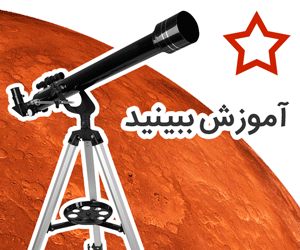01-24-2006, 01:14 PM
Astronomers using a telescope atop Palomar Mountain have discovered what they say is the solar system's 10th planet, a frigid ball of rock and ice bigger than Pluto and 9 billion miles from the sun.
The object, graced with the unglamorous name 2003UB313, was announced late yesterday at NASA's Jet Propulsion Laboratory in Pasadena.
Computer hackers had apparently broken into the astronomers' private Web site and planned to announce the finding themselves. Astronomer Mike Brown, of the California Institute of Technology, said he and two co-discoverers had planned to unveil the news in a few months.
The discovery was actually made in January based on photos taken of the planet Oct. 31, 2003, with Palomar Observatory's 48-inch Samuel Oschin telescope. Brown had been poring over data with Chad Trujillo of the Gemini Observatory in Mauna Kea, Hawaii, and David Rabinowitz of Yale University in Connecticut.
"I was just on cloud nine," Brown said of the moment Jan. 8 that he became convinced the photographed object is the solar system's 10th planet.
The team has submitted a name for the proposed planet to the International Astronomical Union, but Brown would not say what they proposed.
Calling this object a planet promises to be controversial, Brown acknowledged. It orbits the sun at a 44-degree incline to the ecliptic, the geometric plane on which Earth circles the sun. The orbits of most of the solar system's other planets lie very close to this plane.
Some astronomers don't consider Pluto to be a planet, because it, too, follows an inclined orbit ? in its case about 17 degrees.
"I've been a strong proponent of saying Pluto is not a planet, (but) I've come to the conclusion that people love Pluto . . . and I should just let it go," Brown said. "But if (the newly discovered object) is bigger and farther, you better call it a planet. I would say get out your pens and start rewriting the textbooks today."
The object takes about 560 years to orbit the sun in an elliptical orbit. It is now at its farthest point from the sun, about 9 billion miles. It will reach its closest point to the sun ? about 3 billion miles, or Neptune's distance from the sun ? in 280 years.
The object is nearly 1,700 miles in diameter ? smaller than the moon.
It must be a cold, desolate place. If a person were standing on the surface of 2003UB313 and held a pin up to the sun, the head of that pin would cover the sun, Brown said. Temperatures on that surface probably range from about minus 400 to minus 370 degrees Fahrenheit.
"It's not a very nice place to live, definitely," Brown said.
Anyone who has at least a 14-inch telescope equipped with a digital CCD camera can detect the newly discovered object, Brown said. It can be found high in eastern skies in the constellation Cetus during predawn hours. Coordinates for 2003UB313 will be posted at http://www.iau.org, Brown said.
The object, graced with the unglamorous name 2003UB313, was announced late yesterday at NASA's Jet Propulsion Laboratory in Pasadena.
Computer hackers had apparently broken into the astronomers' private Web site and planned to announce the finding themselves. Astronomer Mike Brown, of the California Institute of Technology, said he and two co-discoverers had planned to unveil the news in a few months.
The discovery was actually made in January based on photos taken of the planet Oct. 31, 2003, with Palomar Observatory's 48-inch Samuel Oschin telescope. Brown had been poring over data with Chad Trujillo of the Gemini Observatory in Mauna Kea, Hawaii, and David Rabinowitz of Yale University in Connecticut.
"I was just on cloud nine," Brown said of the moment Jan. 8 that he became convinced the photographed object is the solar system's 10th planet.
The team has submitted a name for the proposed planet to the International Astronomical Union, but Brown would not say what they proposed.
Calling this object a planet promises to be controversial, Brown acknowledged. It orbits the sun at a 44-degree incline to the ecliptic, the geometric plane on which Earth circles the sun. The orbits of most of the solar system's other planets lie very close to this plane.
Some astronomers don't consider Pluto to be a planet, because it, too, follows an inclined orbit ? in its case about 17 degrees.
"I've been a strong proponent of saying Pluto is not a planet, (but) I've come to the conclusion that people love Pluto . . . and I should just let it go," Brown said. "But if (the newly discovered object) is bigger and farther, you better call it a planet. I would say get out your pens and start rewriting the textbooks today."
The object takes about 560 years to orbit the sun in an elliptical orbit. It is now at its farthest point from the sun, about 9 billion miles. It will reach its closest point to the sun ? about 3 billion miles, or Neptune's distance from the sun ? in 280 years.
The object is nearly 1,700 miles in diameter ? smaller than the moon.
It must be a cold, desolate place. If a person were standing on the surface of 2003UB313 and held a pin up to the sun, the head of that pin would cover the sun, Brown said. Temperatures on that surface probably range from about minus 400 to minus 370 degrees Fahrenheit.
"It's not a very nice place to live, definitely," Brown said.
Anyone who has at least a 14-inch telescope equipped with a digital CCD camera can detect the newly discovered object, Brown said. It can be found high in eastern skies in the constellation Cetus during predawn hours. Coordinates for 2003UB313 will be posted at http://www.iau.org, Brown said.
الشمس والقمر بحسبان و النجم والشجر يسجدان
ــــــــــــــــــــــــــــــــــــــــــــــــــــــــــــــــــــــــــــ
http://khojasteh.myblog
ــــــــــــــــــــــــــــــــــــــــــــــــــــــــــــــــــــــــــــ
http://khojasteh.myblog





